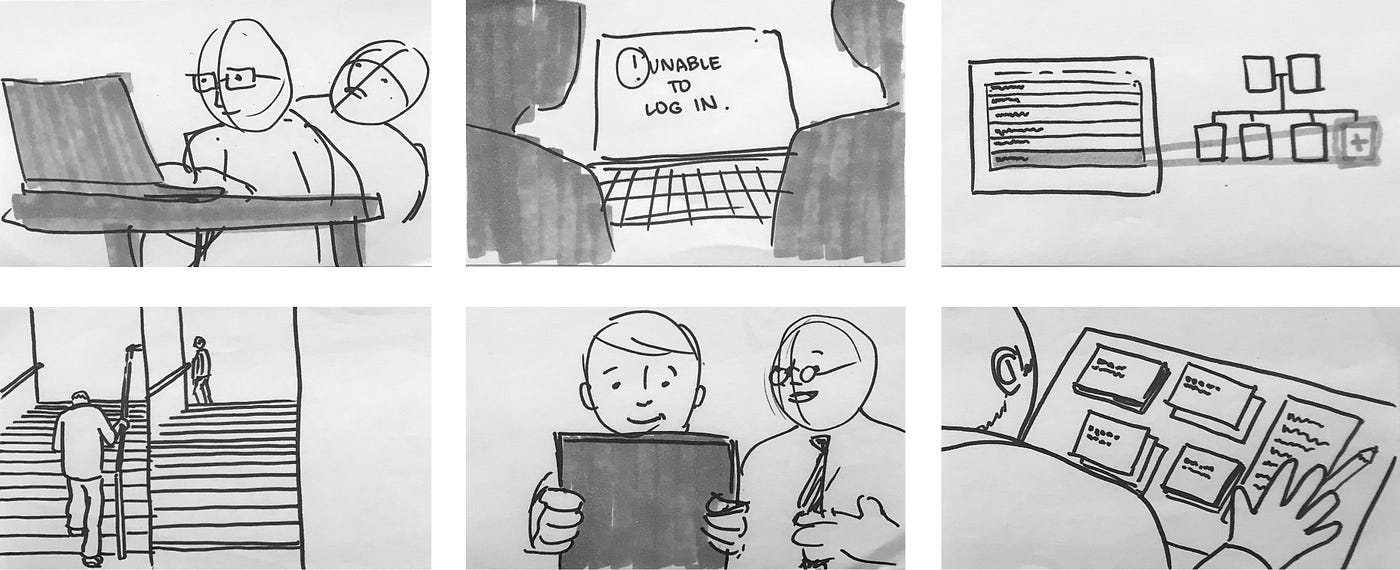
You can’t save the world alone.
And by that, we mean that as a non-profit, not only do you need a fiercely dedicated team–you need support.
Raising awareness, running campaigns, fundraising and more.
Just about all of it begins and ends with spreading your message far and wide, getting people engaged and on board with your cause.
If you’ve been in the nonprofit space for more than five minutes, you know that this is as big a challenge as the work itself.
For every waking moment of every day, the average person’s eyes are bombarded with commercial advertising and entertainment from every screen and billboard at all times.
If you want their attention, you’re going to be competing with massive multi-million-dollar advertising and marketing campaigns.
And even when you do get their interest, you have precious little time to explain your mission before they lose interest and leave.
According to this study by Microsoft, the average user’s attention span now clocks in at just eight seconds– and according to another report, it’s as short as 1.3 seconds for Gen Z!
So how do you ensure that your message not only reaches your audience, but resonates with them?
Enter animated explainer videos—a powerful tool to captivate, connect, and compel action.
These videos are no longer just a fun way to deliver information; they have become essential in driving awareness, engagement, and donations for nonprofits.
Whether you’re explaining your mission, detailing the impact of a specific initiative, or making a heartfelt appeal for donations, animated explainer videos offer a versatile and compelling medium.
Not only do they simplify complex ideas, but they also help organizations tell their story in a way that connects emotionally with the viewer.
We’re big believers in the storytelling rule “show, don’t tell.” So in this blog, we’ll use an example of a proposal / pitch for an NGO to clearly demonstrate how it all works in detail.
In this case study, we’ve been approached by an international non-profit organization that needs a way to teach children aged 6-12 about data privacy.
Their challenges include:
To that end, we propose a series of animated videos that explain the problem and solution at their level of understanding.
The detailed proposal will offer choices of art styles and story ideas with representative images and samples, and explain the pros and cons of each.
The proposal also includes a breakdown of the timeline of the project, from conception to the final delivery date.
This includes critical milestones where we’ll need to discuss progress and feedback with the client before proceeding further, with optional contingencies outlined for changes and edits along the way.
It’s an interactive process with the client being closely involved in the production and development of the conception stage, scriptwriting, animation styles, music and voiceover talent if needed, and final animation.
Every video we create for a client is bespoke and tailor-made for that client and their specific needs and requirements, so we work closely with every client to bring their vision to life.
We also understand that most of our clients are not intimately familiar with the creative process of animation and storytelling, so we offer plenty of suggestions and recommendations throughout the process. But the final decisions are always the client’s.
And might we add, we’re proud to say that in our 15+ years of experience, we’ve amassed a long portfolio of happy (and repeat) customers of all kinds and sizes, in all sorts of industries from all over the world, who unlocked the power of animated storytelling and were delighted with the results of our work.
So without wishing to boast too much, your project is in good hands with us!
With that out of the way, let’s dive into the solution we’ll offer this example non-profit client next.

The pitch/proposal starts with outlining the requirements.
To create a 3 minute animated video to explain the importance of data protection to children aged 6-12 years.
The brief describes children aged 6 to 12 as the ‘Target Audience’ rather than a ‘Target Group.’
We interpret this as a call to design communication that speaks directly to the children rather than their parents.
Therefore, the communication needs to be simple, engaging, and tailored to resonate with the psychology of kids.
A 3 minute video 1920 x 1080 pixel horizontal format, with English voice over and subtitles, free of text to enable translation into other languages.
Effectively communicating with children is always a challenge.
It requires careful selection of words, sentences, and ideas to avoid losing their attention, a common issue in schools daily.
There's also a risk of focusing too much on entertainment, which can detract from the educational aspect.
Here, we’ll suggest two approaches to narrative styles specifically tailored for children along with 9 different art style options.
Conversations between friends often have a more lasting impact and better recall in a child’s life compared to traditional teaching methods or educational content.
Engaging with them on their level is more effective than addressing them from an adult perspective.
To achieve this, we can script an educational dialogue between children or use a child as the background narrator.
Narrative Focus: A dialogue-based or conversational story would be our main preference. Children find it easier to connect with a face rather than an anonymous voice. As we grow older, we become more accustomed to more sophisticated storytelling techniques; but younger audiences respond better to relatable, personal interactions.
That’s how many of us are introduced to the world of magic and storytelling—through journeys filled with dangers and perils.
The protagonist often battles against a villain or seeks to achieve a noble goal. Children (as well as adults) frequently imagine themselves as the hero in these adventures.
In this case, the hero mirrors the children’s experiences, facing real-life adversaries and challenges. And it all leads to an exciting, satisfying climax and usually a happy ending.
This is a structure that is not just used by Hollywood, but even advertising, marketing, education, and more. And it can work amazingly well here, too.
Narrative Focus: This approach utilizes an off-screen narrator to deliver a linear story. A soft, lovable, and affectionate voiceover will guide the children through the hero’s journey. The main messages will be seamlessly integrated into the narrative, making them memorable for the kids.
Story Focus Suggestion: Our story will follow the journey of two children who become separated from their families, survive against all odds, and eventually find refuge in a shelter. It will be a tale of resilience, determination, and, importantly, the 'process' they navigate to overcome their challenging situation. This journey will serve as a guide to explain RFL and how to engage with it.
A non-linear storytelling style allows the story to focus more on abstract and/or emotional concepts rather than just telling a story.
It can tell a story by jumping around the timeline, or tell two or more stories side-by-side, depending on the intended effect.
While it sounds more artistic and experimental, it’s more common than you might realize, and has been proven to work effectively and powerfully when done right.

Source: Brafton
Once the general concept has been outlined and agreed upon, our writers get to work crafting two or three script options for you to choose. This usually takes a couple of days.
This is a more interactive process than it sounds. There’s often some feedback and brainstorming with you, the client, where you can highlight what you like and what’s not working for you; and we offer suggestions and options for how the final script could be shaped better.
Note: It’s important to bear in mind that the length of the script (word count) directly impacts the length of the video itself, and therefore, affecting the final cost. As a rule, we take 2.5 words of spoken narration to need 1 second of animated video.

Source: Medium x UX Collective
At this point, the workflow briefly splits into two parallel processes: the storyboard and the graphic art style.
The storyboard serves as the “skeleton” of the video on which the art and animation are built upon.
It helps map out the timing of visual elements and key moments in the video. A storyboard typically looks like a series of very rough simple sketches and not final art.
Meanwhile, the art style refers to the artistic look and feel of the final animation.
We’ll send you a number of options to choose from. We’ll also include helpful suggestions and explanations of each style’s strengths and weaknesses to help you decide.
Here’s four examples you can choose from, and why they each work:
This form of character animation goes for a charmingly hand-drawn and seemingly simple look.
But this simplistic style also makes it easy to seamlessly switch between real-world depictions to more abstract concepts and back again easily.
And in an age of AI-generated videos and slick imagery, overly complex 3D graphics everywhere, this stands out for its simplicity and human touch.
This style has a more neat-and-clean uncluttered infographic look to draw focus on the important elements.
It may look simple but the animation is as involved as any other style mentioned here.
The white backgrounds and bold, solid colors convey a sense of calm without being too passive or boring.
Here’s a 2D character style that’s loud, bright and colorful, guaranteed to grab attention and draw interest.
It’s lively and fast-paced, speaking the visual language of children’s animated TV shows.
The storytelling style is also kid-to-kid (as mentioned earlier), so it’s immediately relatable to kids that age.
Source: Medium x Thailoch
Here’s what happens once we join hands and get to work.
Creating an animated story involves a series of discrete key steps involving conception, scriptwriting, storyboard, art style selection and finally, the animation itself.
Each step is critical, and we touch base with you to get approval or make changes, before moving on to the next step.
Like building a house, you have to start with the foundations, then structure, then paint the walls. You can’t go back to change the foundations when your construction crew is already finishing up the plumbing and electrical work.
Fortunately, this will all be clearly communicated and explained before we get to work.
And just like that, you have your very own bespoke animated video!
It’s time to deploy it across your channels, check the engagement and response, and analyze what works and what doesn’t.
It’s an ongoing process that gets easier and better with every new project.
There’s a reason the world consumes video like it does.
Video, especially animated video, is a powerful way to communicate ideas, teach, and connect with your audience in a way no other format can achieve so easily.
We hope this helps clarify what’s involved in working with an animated studio to create your own videos. If there’s anything we missed or you still have questions, feel free to drop us a line at the contact form below!
So to sum up: keep telling great stories!

US (732) 387-3864
US Office (Sales & Marketing)
371 Hoes Lane, Suite 200, Piscataway, New Jersey - 08854
(Render 5 Technologies Pvt. Ltd.)
India Office (Production)
WeWork, 246, Udyog Vihar, Phase 4
Gurugram, Haryana - 122016
IND (+91) 9871330069
SERVICES
ANIMATION STYLES
INDUSTRY
Copyright © 2025 Broadcast2World, Inc. All Rights Reserved.
No Comments Yet
Let us know what you think